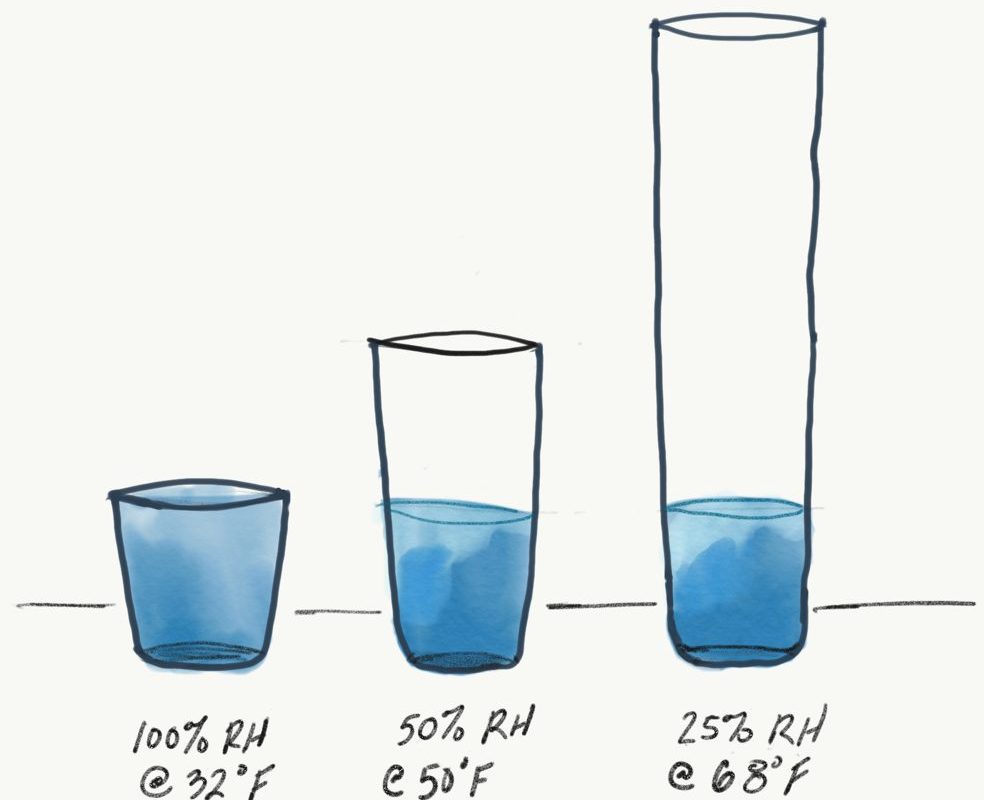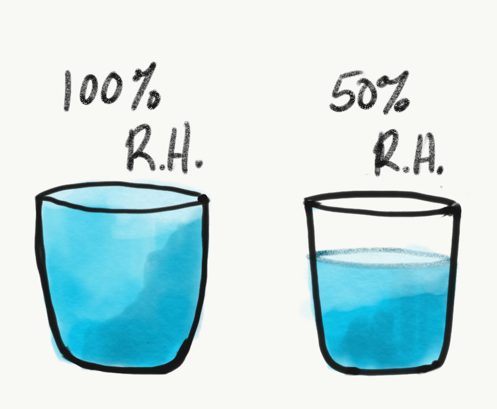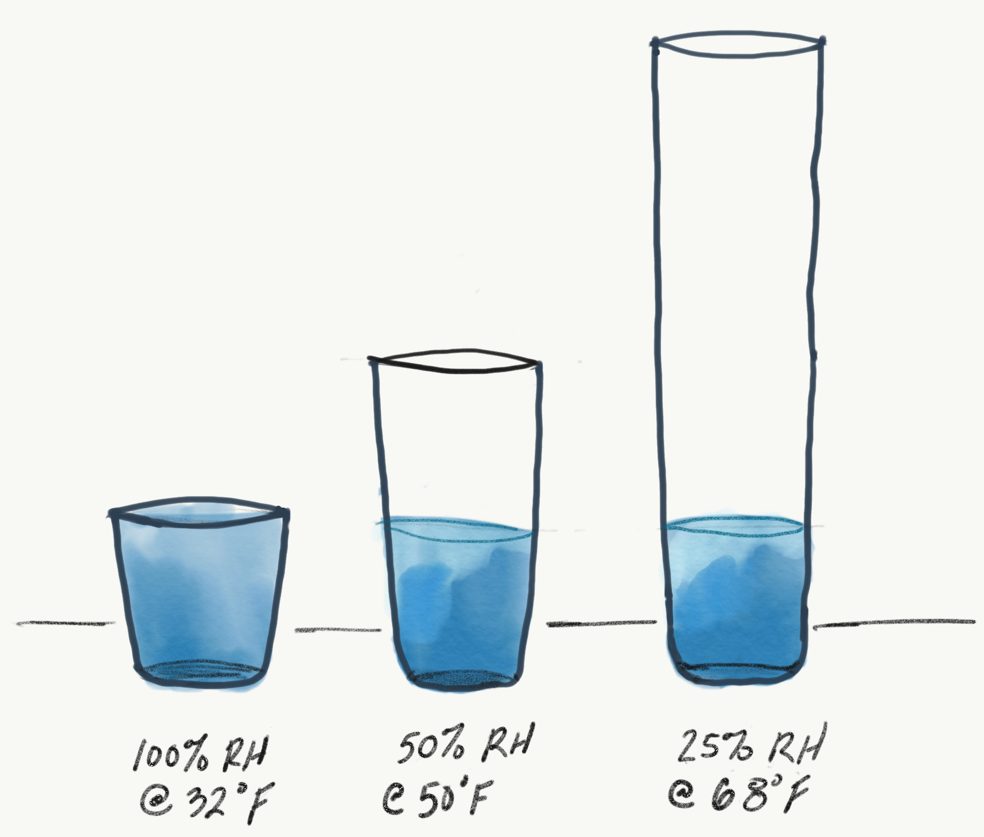
RH Factors- What They Are and How They Affect You
Rh Factors – What They Are and How They Affect You

It started this weekend. From out of nowhere the dryness, the sinus problems, and the small electrocution every time you touch something has appeared. These are just some small indications that winter has arrived inside your home. And these small things can be attributed to relative humidity. So let’s explore what relative humidity is.
RH or Relative Humidity
The RH factor, or Relative Humidity, can be likened to a bucket of water. This bucket represents the amount of water the air can hold at a specific temperature. So, 100% RH means the bucket is full. If the bucket were half full, the RH factor would be 50 percent, which, coincidentally, is considered to be ideal room comfort (Pic 1).
Pretty simple for a beginning. Now, let’s factor in the air temperature. Follow the example (Pic 2). The warmer the air temperature, the more moisture it can hold. For every increase of approximately 18 degrees in temperature, that same bucket doubles in size. In the drawing to the left, the first bucket represents our room at 32 degrees and 100% RH. It shows a bucket that is full. Now, let’s increase the temperature to 50 degrees.
If you look at the second bucket you can see that the bucket size doubles, the amount of water stays the same, and the RH decreases to 50%. By the time you have heated the room air to 68 degrees, a typical room temperature, the third bucket shows the Relative Humidity of the room has dropped to 25 percent. This creates a dry, low humidity condition. While it may seem ideal, this low humidity has been known to cause health issues as well as issues within the structure of the home. Watch for the following signs:
- Static electricity
- Dry, itchy skin
- Respiratory issues including colds
- Viruses
- Hardwood floor separations
- Cracks in the millwork or drywall
I have even damaged a USB drive from static shock.
Helpful Tips
Check your humidifier from time to time during the winter. A good hygrometer, a tool used to measure the humidity in the air, can be found in any hardware store and can be used to monitor the RH in the room. Ideally you want to maintain a Relative Humidity of 45-55 percent. Any more than that could induce mold growth, rotten woodwork and windows, or fill the walls with water. Maintaining humidity levels benefits both your health and your home. While you enjoy clear sinuses and improved breathing, reduced risks of colds and flu, moist nasal passages, and skin that feels better and less dry and itchy, your home will also enjoy passing out less electric shocks, keeping wood from drying out, and even preventing artwork and photos from drying out and becoming brittle.
